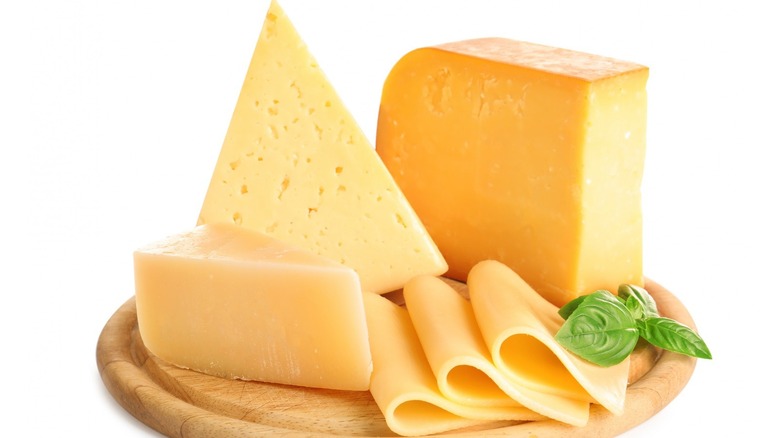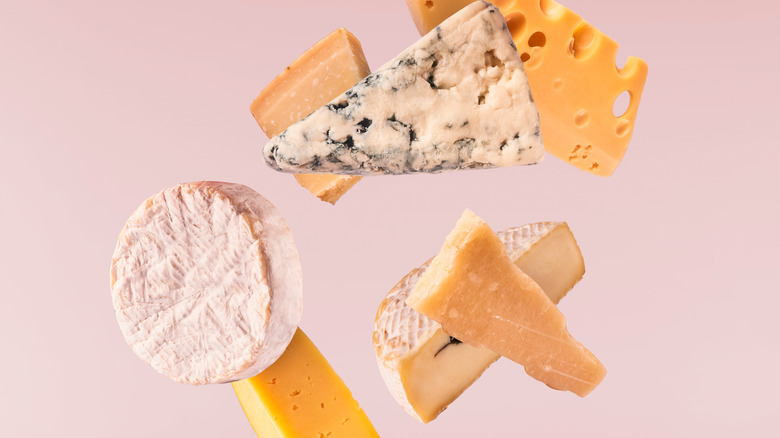The Reason Cheddar Cheese Isn't Naturally Yellow
Time to debunk one of the biggest secrets of the dairy aisle: Although the familiar bright orange hue of some cheddar cheeses has become part of cheesemaking tradition, especially in England and the U.S. Midwest, it isn't a naturally occurring phenomenon.
For answers, Mashed turned to Molly Browne, an American Cheese Society certified cheese professional and "cheese sensory evaluator" who serves as the education manager for the Dairy Farmers of Wisconsin. "Orange cheddars like the ones from Wisconsin are intentionally colored with a natural pigment called annatto, which comes from the seed of the South American achiote tree," she explains.
The origin of this ingredient starts with the biology of the animals themselves. While goat and sheep's milk cheeses are often pure white because the animals "metabolize" a compound called beta carotene and "don't pass any into their milk," Browne notes that "cow's milk tends to be rich in beta carotene, which is what gives cow's milk its signature golden hue." In addition to accentuating the natural color of high-quality cow's milk cheese, there are a couple reasons that cheesemakers still use annatto today: It helps the cheeses stand out and ensures a consistent product year-round, per Bon Appetit.
Does the color of cheese affect its taste?
When it comes to yellow versus white cheddar, the short answer is no: Color of the cheese doesn't change the way it'll taste. For cheddar, the more important variable is age — as the cheese ages past six months and even beyond two years, it becomes more sharp, complex, and even crystally, per The Kitchn.
However, for other cheeses, color is a direct sign of the flavors, textures, and aromas you'll find when you unwrap the wedge, cheese expert Molly Browne tells Mashed. Blue cheese "derives its name from the signature blue veins that grow inside of the wheel," she says. "The cheesemaker will add a specific set of cheesemaking cultures that turn blue when they are exposed to oxygen, and then pierces the wheel to allow oxygen to permeate the interior of the cheese." This, in turn, helps "create the signature textures and flavors associated with this style of cheese."
Some traditional soft cheeses, such as brie and camembert, sport a white rind — the same species of cultures in blue cheese, Browne tells us — that gives them savory, mushroomy flavors (via Serious Eats). Other cheeses like epoisses, taleggio, and more of the world's smelliest cheeses ripen with pink-orange rinds that are a surefire sign of the funky, salty tastes to come (via Culture Cheese Mag).
Although 7% of people still think chocolate milk comes from brown cows, now we know for sure that yellow cheddar doesn't come from yellow cows, either.

